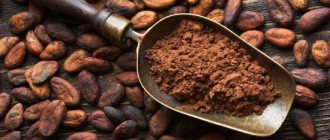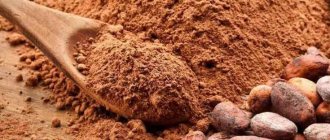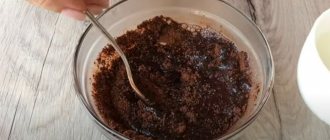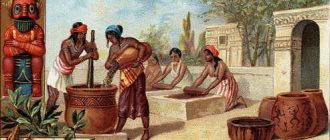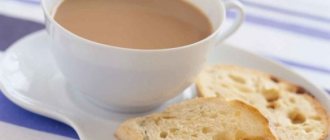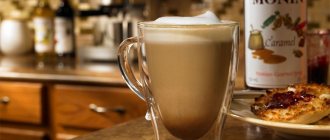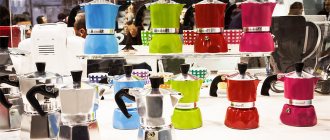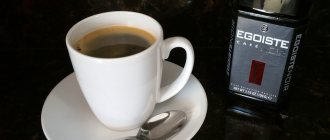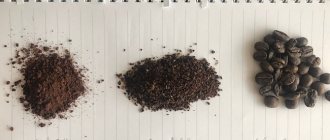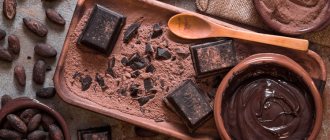What is cocoa liquor
Pre-roasted and ground cocoa beans form a homogeneous semi-liquid mass called cocoa liquor. This is a semi-finished product for making cocoa butter and powder, as well as a base for chocolate without sweet additives, made in the form of blocks. Preliminary cleaning from foreign impurities guarantees high quality of delicate cocoa mass.
How is cocoa powder obtained?
Cocoa powder is obtained by grinding the cocoa cake remaining after pressing cocoa butter from cocoa mass into a powder.
The production process for preparing cocoa powder consists of three technological operations:
- crushing and cooling of cake;
- grinding, rapid cooling and sifting (with air separation) of the mixture obtained during grinding to separate from it a very finely ground and homogeneous product called cocoa powder;
- packaging and packaging of cocoa powder.
To obtain good quality cocoa powder, certain temperature conditions must be observed. In rooms for the production of cocoa powder due to artificial cooling, the air temperature should be 8-12°C. When grinding in mills or in a disintegrator, the powder heats up due to friction. In this case, the cocoa butter particles melt, at elevated temperatures they harden slowly, and the color of the cocoa powder becomes dull gray. To obtain a good cocoa powder of a brownish-reddish hue, after grinding it is necessary to quickly cool its dust particles in an air stream at a temperature of 10-15 ° C, and then separate the resulting powder from the air.
Cocoa powder contains very few extractives (organic non-protein nitrogenous and non-nitrogenous compounds extracted by water from animal and plant tissues) and is practically insoluble in water. When mixed with water, it forms a suspension (a suspension of solid particles in water or milk). The quality of the suspension is assessed by its stability, it depends on the particle size of the cocoa powder in suspension.
Cocoa powder should have a color from light brown to dark brown without a dull gray tint, the taste and aroma characteristic of cocoa beans, without foreign tastes and odors. The powder should be finely ground, homogeneous, and when rubbed between your fingers, no grains should be felt.
To change the shades of cocoa, the alkalization process is used. Alkalization is the addition of an alkali (usually in the form of a solution of calcium carbonate, potassium or sodium carbonates) to the cocoa nibs. The alkali changes the color of the cocoa beans as they are roasted. The amount and concentration of alkali have a significant impact on the color of the resulting cocoa. The duration of alkalization depends on the time required for complete absorption of the alkaline solution into the cocoa nibs. This process usually takes about an hour, and during this time the temperature of the mixture can reach 80°C. The duration of absorption is influenced by the applied pressure or vacuum (separately or jointly). Alkalization affects not only the color, but also the aroma of cocoa products.
The influence of the amount and concentration of alkali on the color of the resulting cocoa
What is the difference between cocoa liquor and cocoa powder?
Cocoa liquor is specially prepared and crushed cocoa beans. The presence of cocoa mass in chocolate is a big plus; if cocoa butter is present, then the taste of chocolate will be rich.
The pressed and ground version of cocoa mass is cocoa powder, which removes some of the oil, but the exquisite aroma remains the same. Cocoa powder is much cheaper than other processed products, and its presence in chocolate is undesirable for high-quality confectionery products.
Important! The price of chocolate is not a guarantee of its quality, but the cheap segment of the market often abounds in the replacement of cocoa butter with its cheaper analogues.
What is cocoa butter?
Cocoa butter is a vegetable fat obtained from grated cocoa by pressing.
In turn, cocoa liquor is ground nibs from the fruits of the cocoa tree. Cocoa butter is the fatty base for the production of chocolate and other confectionery products. Cocoa butter is whitish-yellow in color, has virtually no odor, and is hard and brittle at room temperature. There are two types of cocoa butter: natural and deodorized (it undergoes additional processing).
As a rule, deodorized cocoa butter is used to produce chocolate. The deodorization process solves the problem of depersonalizing the taste and smell of oil. The essence of deodorization comes down to purifying oil using high temperature, vacuum and steam for distillation. After this treatment, saturated hydrocarbons, acids, aldehydes, pesticides, ketones and natural essential oils are removed from cocoa butter. In general, everything that can be removed is removed, so there is no need to even talk about the benefits of such oil. When producing chocolate using non-deodorized cocoa butter, chocolate acquires a special, specific aroma and taste, it retains most of the acids and essential oils, and it seems that one can conclude that such oil is healthy.
Let's look at the chemical composition of cocoa butter and compare it with other products.
The chemical composition of cocoa butter includes two- and three-acid triglycerides mixed with fatty acids:
- Oleic up to 43% (in hazelnut oil 70-80%);
- Stearic up to 34% (in lamb fat up to 30%);
- Lauric and palmitic up to 25% (in palm kernel oil 47-51%, butter 25%);
- Linoleic 2% (in sunflower oil 46-60%);
- Peanut, only traces present (found in peanut butter).
We can absolutely say that even with the presence of vital acids in cocoa butter, there is no deficiency in the daily human diet, because their consumption is compensated from other products of the daily diet.
Production
The technology for the production of grated cocoa includes the following mandatory steps:
- Collection and pre-processing of cocoa beans - drying and fermentation.
- Heat treatment of prepared raw materials at a temperature of 220 °C and high pressure to destroy bacteria, microorganisms and their spores.
- Roasting the beans to remove moisture and sterilizing them by injecting water inside the roasting drum at 20 second intervals.
- Removing fragments of the shell of cocoa beans using peeling.
- Grinding of cocoa beans as a result of mechanical action. The heat generated as a result of grinding leads to the melting of the finished mass and the formation of a liquid substance with a temperature of 80 °C.
- The almost finished mass of grated cocoa is sent for cooling to 45–50 °C in tanks and packaging into commercial blocks, usually weighing 25 kg.
History of chocolate
The history of chocolate goes back more than three thousand years. Cocoa fruits were known to the Olmec civilization - American Indians who lived a thousand years BC.
It has been noticed that among pagan peoples the object of worship is everything unusual. Over the centuries, many Indian cultures have changed, but the ancient inhabitants of America always had a reverent attitude towards cocoa. The Mayan tribes believed in the god of cocoa and drank chocolate during rituals as a sacred drink. The Aztecs called cocoa fruits the food of the gods and believed that they gave spiritual insight.
Initially, chocolate was consumed only as a drink. From the language of the Mexican Indians, the word “chocolate”, or rather “chocoatl”, is translated as “bitter water” or “water and foam”. The drink was quite viscous, bitter, and was prepared with spices and aromatic herbs. This is how the first European, Christopher Columbus, recognized him, delivering cocoa fruits, among other wonders, to the Spanish monarch. However, for a whole century the drink remained in oblivion. Chocolate gifts
Fernando Cortes, the viceroy of the king in New Spain, really tried it. While conquering part of Mexico, he appreciated the invigorating energy of the Indian drink. In addition, cocoa fruits were used by the local population as money. Having learned about this, Cortez became the richest owner of cocoa plantations.
At the suggestion of Cortes, the drink became known to the Spanish monarch. At the same time, chocolate was so popular with the court that they began to drink it in all noble houses. Mere mortals could not try the drink: it was so expensive that one could buy a good slave for a hundred cocoa grains. However, two hundred years later, chocolate houses opened in almost every European city and were loved along with coffee shops. Chocolate was served with hot cross buns and other sweets. They drank it calmly and leisurely, enjoying the tart aroma and unusual taste.
The 19th century was revolutionary in chocolate production. In 1828, engineer Conrad van Houten invented and patented a hydraulic press with which oil was extracted from cocoa beans. In 1879, after eight years of experimentation, the Swiss Daniel Peter introduced solid milk chocolate to the market for the first time. In the same year, inventor Rudolf Lindt from Bern, having made an original device, began producing fondat chocolate, which melted in the mouth. This chocolate was such a success that twenty years later the Zurich confectioner Rudolf Sprüngli paid 1.5 million francs for Lindt’s invention, with which one could buy 435 kg of gold. With the development of civilization, the process of producing chocolate has become cheaper, and chocolate itself has become more accessible. However, in parallel with the mass culture of consumption, an elite culture was born in Europe, for wealthy connoisseurs.
The benefits and harms of grated cocoa
The obvious advantages of ready-made grated cocoa include the following:
- Rich natural composition with antioxidant, anti-allergenic and regenerating properties. Cocoa has a beneficial effect on the heart muscle, improves the condition of blood vessels, reduces the risk of thrombosis and increased blood pressure. Normalizes metabolism, maintains normal functioning of the thyroid gland, restores muscle performance and treats skin diseases.
- Relatively low cost compared to other forms of the product - cocoa butter.
- Possibility of making dark, milk and white chocolate.
- High taste qualities in the manufacture of confectionery products in industrial production and at home.
We can also highlight the disadvantages of the product:
- The need for additional sterilization to destroy heat-resistant microorganisms that do not die during the frying process.
- Possibility of sour or moldy taste in batches of cocoa beans of Malaysian and South American origin, which cannot be corrected during processing and dearomatization in Moscow.
Useful properties of cocoa
The most useful of cocoa products is cocoa powder, and this is true, if only because the ratio of useful elements to the mass of the product in cocoa powder is the highest. By removing cocoa butter from cocoa liquor, we obtain cake with a high concentration of theobromine and flavonoids (food antioxidants).
Let's list the beneficial properties of cocoa:
- cocoa is a nutritious and high-calorie product. There are 400 kcal per 100 grams of cocoa beans. You are definitely guaranteed a charge of vivacity and energy for the whole day;
- is a natural antidepressant, because it contains phenylethylamine;
- contains vitamins (B9 - folic acid, A, B, PP, E), minerals (zinc, iron, potassium, calcium, sodium, phosphorus), protein;
- cold cocoa quickly restores muscles after sports or hard physical work and is even superior to special drinks intended for athletes;
- improves well-being;
- helps in the production of endorphin - the “hormone of joy”;
- contains melanin, a pigment that protects the skin from ultraviolet rays;
- helps lower blood pressure, which helps with hypertension;
- contains many procyanidins (good antioxidants);
- in some countries it is considered an aphrodisiac.
Cocoa still has many beneficial properties. Therefore, fans of this drink are lucky, because they can enjoy not only their favorite taste, but also receive benefits for their body. But remember: everything is good in moderation. Do not overuse this drink, because the cocoa beans from which it is made contain purines - substances that participate in the body's metabolic processes, but their excess in the blood can cause a number of complications and diseases. Approach everything wisely, and you will receive not only pleasure, but also health benefits.
Analyzing the above, we can say with confidence that all the beneficial properties of chocolate are concentrated in fibers and cocoa particles, and fat (cocoa butter) has nothing to do with it.
Popular recipes
Hot chocolate
To prepare a tasty and nutritious drink, take 50 grams of grated cocoa; if the product is presented in a briquette, it is grated or crushed using a blender.
Heat 200 ml of water in a saucepan and dissolve the powder and 2-3 teaspoons of sugar in it, stirring constantly with a whisk. Boil for 15 minutes until the mass thickens until it takes on the consistency of liquid sour cream.
The result is a thick, brown drink that can be stored in the refrigerator and reheated before drinking.
Important! The classic recipe of the French monks involved keeping the drink in a porcelain bowl to thicken it.
What is cocoa drink?
Cocoa is not only a tree or powder, there is also a drink with a similar name. The basis of this drink, of course, is cocoa powder, which is mixed with water or milk; it is also possible to add sugar or spices to the drink to give special shades of taste.
Very often, cocoa drink is confused with hot chocolate and vice versa. Unlike cocoa, hot chocolate has a chocolate base. Therefore, it is initially quite sweet and thick due to the cocoa butter and water emulsion. Cocoa has a tart and bitter taste due to its low fat content.
Chocolate varieties
Depending on the type of chocolate, various ingredients are used to make it:
- Dark chocolate: cocoa mass + cocoa butter + sugar.
- Milk chocolate: cocoa mass + cocoa butter + sugar + powdered milk.
- White chocolate: cocoa butter + sugar + powdered milk.
It is worth noting that white chocolate stands apart in this family, as it is made from powdered sugar, cocoa butter, milk powder, salt and vanilla. White chocolate does not contain cocoa mass at all and therefore has a spectacular creamy color, which for simplicity is called white. The cocoa butter content in this chocolate is about 40%. The sweetness factor for white chocolate is infinity. To improve the taste, vanilla or vanilla extract can be added to all types of chocolate.
Benefits for hair
Children and adults should also drink cocoa to improve the condition of their hair. Nicotinic acid (2.19 mg) in the drink has a positive effect on hair both when used internally and externally. It activates dormant hair follicles, stimulating new hair growth.
To achieve a noticeable effect, you need not only to drink cocoa, but also to make hair masks from it. When applied externally, nicotinic acid stimulates blood circulation in the scalp, so that nutrients reach the roots in greater quantities. This stimulates rapid hair growth.
The most popular mask made from milk and cocoa is used when it is necessary to quickly grow hair, as well as to get rid of bald spots. Mix two tablespoons of powder with 100 ml of hot milk. Pour a teaspoon of cognac into the mixture to smooth your hair.
Cool the mixture slightly and apply to the hair roots and scalp. Wrap them with film and a towel. Leave this mask on for 30–40 minutes, then rinse off. Use 2-3 times a week to reduce hair loss.
Important! This mask is not suitable for blondes, because cocoa can color the hair, giving it a yellow or brownish tint.
A fairy tale for children about raw RAW cocoa!
Dear visitors of our site!
In the process of our work, we often encountered and continue to encounter such questions as:
Do you have RAW or raw cocoa? Cocoa powder? Or cocoa mass?
Unfortunately, we have to disappoint you - raw cocoa does not exist and will not appear in the near future until cocoa producers come up with such technology.
Let's try to understand this issue:
- What can be classified as RAW or raw food products are products that are not processed at temperatures above +40 degrees
- All cocoa beans undergo a fermentation process - when the cocoa beans are placed in containers, covered with leaves and left to ferment in the open air for several days, and in countries such as Ecuador, Colombia - the air temperature is very high in the summer and during the fermentation process the cocoa beans heat up to 50-60 degrees.
- Three types of products are made from fermented cocoa beans, and what’s most interesting is that all these products can be obtained only after cleaning the cocoa beans from cocoa vella, and the cheapest way to remove cocoa vella is to fry the cocoa beans (other methods are simply unprofitable and cannot be mass produced are used)
- cocoa mass - cocoa beans ground into a paste, pre-roasted (cocoa vellu must be removed), and the manufacturers do not say to what temperature the heating occurs during the grinding process. From my experience I will say that when we made grated cocoa in melangeur, it heated up to 70 degrees
- cocoa butter - to get it, cocoa beans are fried and then the oil is squeezed out, the so-called COLD METHOD, but without roasting the beans it is almost impossible to get a lot of oil and no manufacturer can afford to skip this process, otherwise such a product will cost fabulous money AND WHICH IS MOST INTERESTING, THE AROMAT OF THE BUTTER, WHICH EVERYONE LIKES SO MUCH, APPEARS THANKS TO ROASTING COCOA BEANS
— cocoa powder is the cake that remains after the production of cocoa butter made from roasted cocoa beans; it is simply ground into powder, and for some reason many people think that if this process occurs at low temperatures, then this product can be called raw food. This is excellent, now I can easily eat fried potatoes, the main thing is not to heat them above 40 degrees.
Raw cocoa beans are stored for no more than 7 days, after which dangerous bacteria develop in them, and therefore all cocoa products are subject to heat treatment and have a shelf life of 24 months.
All information provided was received from cocoa product manufacturers.
Also, no seller, most likely, will be able to document that his products are RAW, simply because these are all inventions of marketers, and there is not a single official certifying body for RAW products.
We hope that our conclusions and observations were useful to you.
Do not accept publicly available information from social media or from anyone claiming to be an expert as reliable information. This is just information - in order to turn it into knowledge, you need to check it, study the whole essence of the issue yourself!
Try cocoa from different countries and regions! Evaluate its taste and organoleptic properties and choose the best for yourself based on your preferences; Do not take generally accepted stereotypes, statements by bloggers and advertised points of view as a guide!
Discover your world of cocoa!
And we will try to combine in our store only the best cocoa from different countries and regions, so that you can choose your favorite!
"Grey hair" of chocolate
If the chocolate is poorly tempered, a whitish coating will form on its surface. It is called fat bloom. These are unstable cocoa butter residues that come to the surface and form bloom. Such chocolate has a rough taste, that is, it does not correspond to the organoleptic properties of chocolate.
Another type of chocolate gray hair is sugar bloom. It is a consequence of moisture condensation on chilled chocolate products. This is a consequence of incorrectly selected temperatures during cooling. In addition, graying can also occur due to temperature changes, so it is very important to observe the storage conditions for chocolate products after the product leaves production.
Chocolate
A high-tech product, the creation of which is impossible without controlling powerful machines and the finest physical and chemical processes.
The quality and taste of chocolate depends primarily on the type of cocoa beans. The cocoa tree, an evergreen woody plant, has the botanical name Theobroma cacao. "Theobroma" means "food of the gods" in Latin. The hard fruits of this tree look like small melons. Each fruit contains from 20 to 40 seeds arranged in rows. They are called cocoa beans, although they have nothing to do with real beans and legumes. Top five cocoa producing countries: Cote d'Ivoire, Ghana, Indonesia, Nigeria, Brazil. Then come the countries of Latin America (Colombia, Venezuela), the countries of the Caribbean (the leader is Ecuador). Chocolate Turning cocoa beans into chocolate is a complex process in which ingredients, time and temperature play a crucial role. By varying these three parameters, a wide variety of unique recipes can be created.
